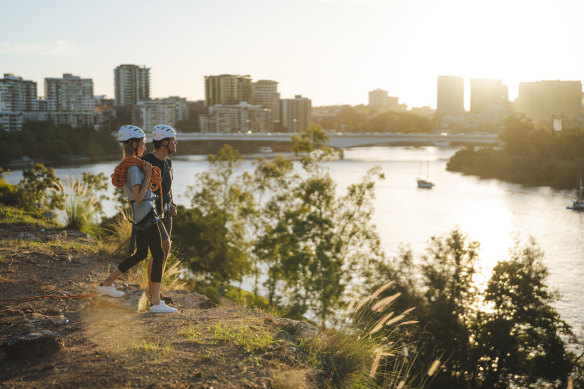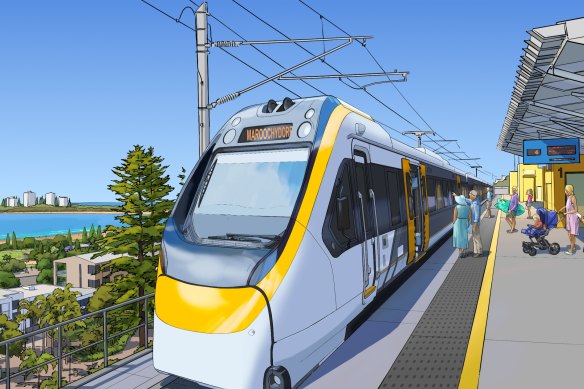- Perspective
- Politics
- Federal
- Federal budget
This was published 6 months ago
Billions of dollars to bolster SEQ, but migration and Olympics loom large
By Sean Parnell
Queensland’s population is growing faster than was forecast in the last federal budget, with more than 110,000 people expected to relocate from other states over a five-year period, when a similar number will leave NSW.
But since the last budget was handed down, the Albanese government has scaled back its Queensland infrastructure commitments, leaving still-unanswered questions over major road and rail projects around Brisbane.

Queensland is the most popular state for interstate migrants, but there are questions over the infrastructure and housing needed to support them.
The Miles government has been demanding more Commonwealth funding, particularly given Queensland’s continued strong population growth, and will now go to the October state election having to explain the lack of support from Labor colleagues in Canberra.
Budget papers released on Tuesday night reveal federal Treasury underestimated interstate migration to Queensland by 7300 people this year, and expects to be 1600 above its forecast for next year.
South-east Queensland has proved so popular, the Australian Bureau of Statistics predicts Brisbane will house the majority of the state’s population by the end of 2027-28.
Federal Treasurer Jim Chalmers, an MP from Logan, used his third budget speech to promise cost-of-living relief for Australians, and ongoing efforts to rein in inflation, but focused more on long-term reform than Queensland’s immediate pressures.
“We are building an economy that will position our people to benefit from the opportunities of the decades ahead,” Chalmers told parliament.

An artist’s impression of one of the stations along the Direct Sunshine Coast Rail Line, for which the federal government has already announced its funding contribution.Credit: Department of Transport and Main Roads
The budget papers confirm the government will spend $2.2 billion on south-east Queensland projects – including already announced funding for the Sunshine Coast rail line, the Coomera Connector, and highway works north of Brisbane – while also rolling out its multibillion-dollar national housing strategy.
According to the papers, the projects in the south-east will help “accommodate a population that has grown by over 50 per cent in the last 20 years, better integrating the region, and unlocking future housing development”.
There was little in the way of new detail on housing – nationally, the government expects to add “a city around the size of Brisbane to Australia’s housing supply” – and the SEQ City Deal was largely unchanged.
Despite the Gabba stadium rebuild being abandoned, the papers rely on the previous Commonwealth-state funding deal for the 2032 Brisbane Olympic and Paralympic Games to forecast future spending. The deal is still being renegotiated, and the Games clock is ticking.
The government is spending less on the Games than it expected in the short term, but has still set aside $1.6 billion over four years (subject to negotiation).
Treasury officials will not quantify their likely Games liability, and have yet to detail how they will monitor the government’s financial investment. There is also no word on the rumoured sale of Victoria Barracks to help revitalise inner-city Brisbane, although the Defence Department expects to sell more property in 2025-26.
The government has already committed funds to build a quantum super computer at Brisbane Airport, under its ambitious Australian manufacturing drive, and money for regional Queensland projects, including an inland freight route and upgrade of the Cairns Marine Precinct.
There is also $1.8 million over two years for children’s hospice Hummingbird House, more funding for investigations into stillbirths, and extra money for health surveillance in the Torres Strait.
While there is no guarantee the Sunshine Coast rail line will be built – committed funds would take it no further than Caloundra – the Albanese government plans to announce options for a fast rail route between Melbourne and Brisbane before the next budget.
Cut through the noise of federal politics with news, views and expert analysis. Subscribers can sign up to our weekly Inside Politics newsletter.